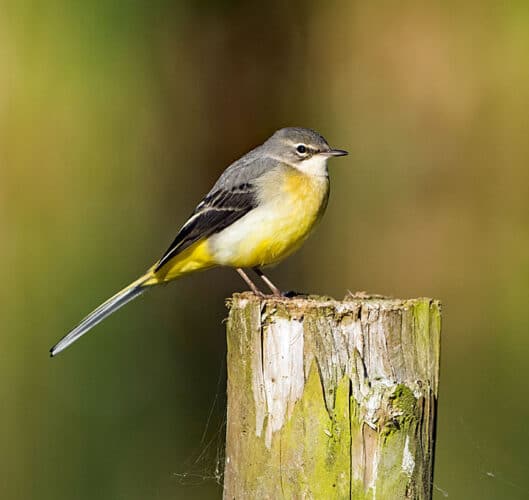
The great yellow wagtail (Motacilla flava) is a species of bird in the wagtail and pipit family (Motacillidae). This bird is not only found in Thailand, but also in the Netherlands and Belgium.
The great yellow wagtail has a gray back and a yellow belly. Males also have a black throat in summer. The yellow wagtail is a species of bird belonging to the thrush family (Motacillidae). This bird is also known as the yellow wagtail and is found in Europe, North Africa, Asia and North America. The great yellow wagtail is a small bird with a length of about 15 centimeters and a weight of about 20 grams.
In spring and summer they can be found near water streams, especially in the mountains and hills. The bird nests in hollows near water. In winter they are found near lower water and on the coast. Like other wagtails, they often wag their tails and fly low with undulations and have a sharp call often given in flight. They forage singly or in pairs on meadows or in shallow water marshes. They also use rocks in water and will often perch on trees.
The bird is widely distributed throughout the Palearctic with several well-marked populations. The birds winter in Africa and Asia. The breeding season is from April to July and the nest is placed near fast-flowing streams or rivers on a dike between stones and roots.
These birds feed on a variety of aquatic invertebrates, including adult flies, mayflies, beetles, crustaceans, and molluscs. Wintering birds are known to return to the same locations each year, sometimes a small urban garden. The greater yellow wagtail is a common breeding bird and can be found in a wide variety of habitats including urban areas, parks, gardens, meadows and forest edges. It is a very suitable bird for the human environment and can often be seen at feeding places and in parks and gardens.
The great yellow wagtail is a common bird and is not endangered. However, it is subject to certain environmental problems, such as air pollution and habitat loss. To help the big yellow wagtail, you can set up feeding areas in your garden or park and try to avoid harmful chemicals.

